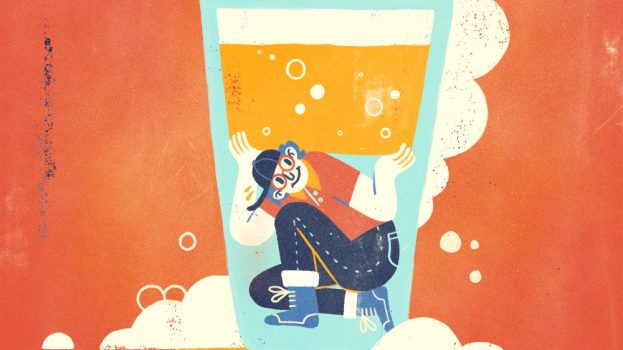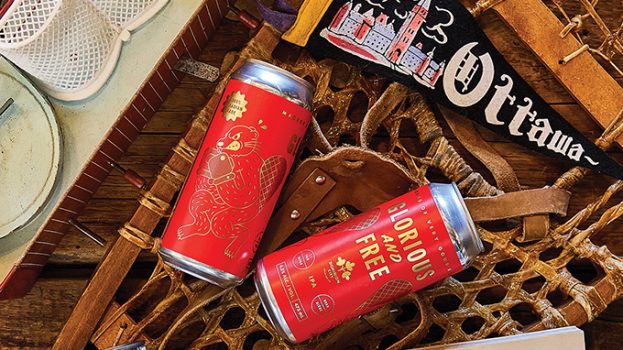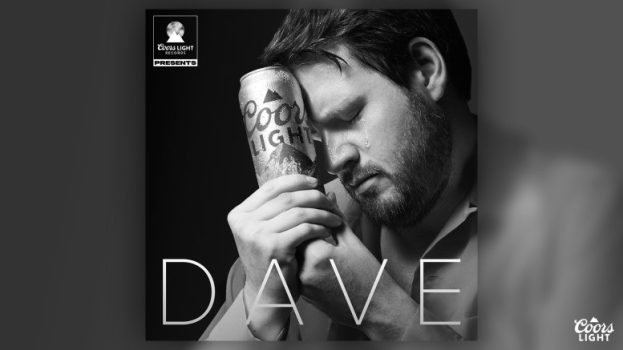Hockey fans are about to be much busier over the next month, and Budweiser has taken steps to make celebrating the biggest goals even more rewarding for fans.
It is the five year anniversary of the Red Light, a replica of a goal light found in hockey arenas across Canada and can be synced to light up whenever the owner’s favourite team scores a goal. Over the years, the company has also released Red Light pint glasses and created a giant version of the light that toured Canada and was sent to the North Pole.
In a 30-second TV spot and one minute online anthem video, fans in bars and homes eagerly watch a hockey game. The anticipation builds until the big goal finally lands in the net, and the bars explode with cheers as the fans raise their glasses and goal lights in celebration. The anthem spot features hockey legend Wayne Gretzky watching just as intently as the hockey fans in the spot, and “The Great One” has been enlisted to sign his name on a series of special edition, gold-coloured Red Lights and glasses currently available for purchase online. The online video also features appearances from Dale Hawerchuck and Paul Henderson, as well as Olympians Tessa Bonhomme and Geraldine Heaney.
[iframe_youtube video = “YwLnw9It9d0”]
Anomaly Toronto led on creative, with Veritas on PR, Mosaic on experiential activations and Hunter Straker handling trade marketing. The media assignment is being split between UM and Vizeum (Vizeum won the media assignment for parent company AB InBev in the fall).
Last year, Budweiser moved towards a more emotional approach for Red Light, using the equity and popularity of the device to create a deeper connection around the moment of “goals,” instead of being focused on the unique features of the product itself. Owning the “goal” itself has also allowed the Red Light concept to be brought to other markets where sports other than hockey are more popular.
Andrew Oosterhuis, director of marketing for Budweiser at Labatt Breweries of Canada, says “owning the goal” is an approach the brand is continuing, using the anniversary as an opportunity to “premiumize” the light. The new light is plated with 24 carat gold and comes with a certificate of authenticity for Gretzky’s autograph.
“Our inspiration is to generate even more buzz and excitement,” Oosterhuis says, adding that each campaign around the Red Light over the last five years has generated a quarter billion earned media impressions. “It’s an idea people talk about that earns attention instead of pays for attention. I think we really ‘premiumized’ this year in a way that will elevate our role in the celebration for fans.” Bringing in high-profile former players like Gretzky, Henderson and Hawerchuck also helps the brand elevate the experience of celebrating goals, he says.
[iframe_youtube video – “7EDjMHQlYyA”]
While the campaign is launching less than a month before the 2018 Winter Olympics, Oosterhuis is quick to point out that Budweiser is not an official Olympic sponsor, and the idea is to continue to celebrate goals “at all levels.” But carving out a place for Budweiser in the hockey space without official partnerships is something the brand has experience with: the concept of the Red Light came about in 2013, in part, as a way to build Budweiser’s connection with hockey fans, despite the NHL having announced an agreement with Molson to be the official beer of the league two years earlier.
Big moments that capture the public attention have become a significant part of Budweiser’s marketing strategy in Canada, elevating both the brand itself and the celebrations around goals. Campaigns around the Red Light have typically launched for the Super Bowl, and the brand will be broadcasting the TV spot on the Canadian feed of this year’s game. The brand has also capitalized on attention-grabbing moments outside of hockey, such as Toronto FC’s MLS Cup run late last year.
“If there’s a conversation going on that you can join in on, it’s going to help you break through,” Oosterhuis says. “Super Bowl being as big a platform as it is, it’s probably the first and only time of year consumers are looking for brands and advertising. But throughout the calendar year, it’s part of our marketing strategy to find a conversation and engage consumers around it.”
























